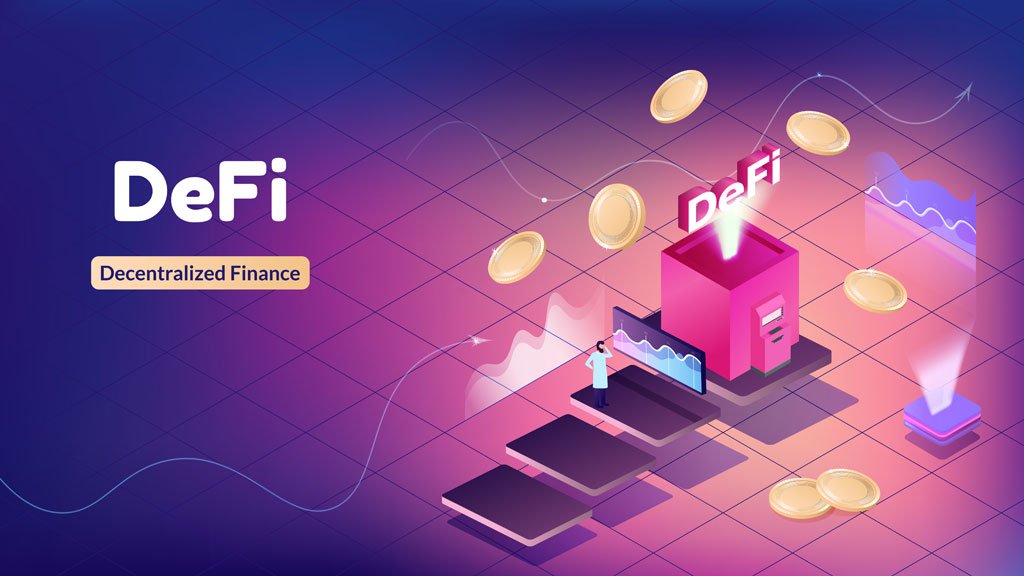Decentralized finance is touted to be the innovative force of a new, open decentralized financial system. While this statement is debatable, the market of DeFi now offers a vibrant landscape of successful use cases. From blockchain-based games to lending platforms, decentralized finance offers bountiful investment opportunities for forward-looking business owners.
The resilient market attests to the growing DeFi adoption. According to Defi Pulse, the total value locked in decentralized finance has surged by over 100x since December 2019. At the same time, money injected into blockchain has experienced a 7x growth over the last four years, according to IDC.
Table of Contents
While the prospects seem tempting, what does it take to build a DeFi solution? With that said, let’s go over the nuts and bolts of DeFi development and the milestones it involves.
The basics of DeFi development
Like any emerging field, decentralized finance development is a thorny path due to its blockchain nature.
DeFi applications aim to challenge traditional financial systems, such as banks and exchanges, where all transactions and services are subject to long and meticulous checks. Most DeFi applications run on the Ethereum blockchain and rely on smart contracts to ensure that the agreement between the parties was met.
First of all, let’s see what a typical DeFi application consists of:
- Settlement layer ( i.e. Ethereum);
- Asset layer – the standard used for creating and issuing smart contracts (i.e. ERC-20);
- Protocol layer – a specific DeFi application such as lending platforms, derivatives, lending, and others;
- Application layer – a decentralized app that allows the solution to interact with the user;
- Aggregator layer – ensures more convenience by bringing together trades across various DeFis.
As you see, the structure and ecosystem of any decentralized application are complex. Let alone the fact that all layers should be in sync to guarantee safe and user-friendly DeFi services.
Main stages of DeFi development
Just like any software product, DeFi solutions follow a time-tested development lifecycle. The latter leads the product from ideation to deployment and maintenance. Let’s have a closer look at each stage.
Strategy Development
Blockchain development starts with a thorough business and technical analysis. Thus, prior to creating your technical documentation, you should perform competitor research as well as define your target audience. Based on those insights, a list of features is built to generate the expected ROI.
UX/UI design
UX/UI design is essential to deliver user-friendly experiences be it a traditional app or a dApp. Moreover, UI and UX design should create synergy to provide the ultimate user experience.
However, blockchain-enabled apps deliver an unprecedented suite of functionality that is difficult to match into traditional UX/UI design approaches. Therefore, this stage requires solid expertise from DeFi-knowledgeable designers who already had experience creating the look and feel of decentralized applications.
Smart contract protocol development
Smart contracts serve as a backend for decentralized applications that will later handle peer-to-peer transactions. These are digital protocols that were developed to validate the terms of a legal contract between two or more parties. Tech-wise, smart contracts are created on the basis of Ethereum, as it is one of the most reliable crypto platforms. Although Ethereum provides ready-made templates, expert help is still required to audit the safety of the code.
Besides audits, companies may need smart contract architecture or optimization to save Ethereum gas.
Integrations
Since DeFi projects cannot exist as stand-alone solutions, they need to be effectively integrated into the blockchain ecosystem. DeFi integration is the most challenging part of all because all protocols come with different features. Yet, integrations are necessary if you need to power your DeFi Protocol with other ready-made solutions such as asset management interfaces and others. Typically, developers analyze external dependencies to plan integrations with third-party vendors that are required for transactions or other services.
Front-end development
Now it’s time to bring your UX/UI to life. The interior of decentralized solutions is similar to traditional applications. Thus, your team can choose one of the time-tested front-end frameworks to empower the look and feel of your application. React, Angular, and other regular suspects will be a nice match to a decentralized application.
Testing
Once all the building blocks are put together, it’s time to test your DeFi solution. Besides regular tests, your team should prioritize vulnerability checks, since these are common DeFi pain points. Moreover, your developers should write extensive unit tests and functional tests. Unless thoroughly checked for vulnerabilities, your DeFi solution can lead to loss of funds. According to ChainAnalysis, DeFi theft accounted for more than 70% of the thefts that happened in 2021.
Top DeFi projects to build in 2022
Now that you know what it takes to build a blockchain-powered solution, it’s time to analyze the current landscape of DeFi ideas.
DeFi token development
DeFi tokens are tokens that exist on decentralized finance platforms. They are a new type of token that allows people to borrow and lend money without the need for a third party. As such, tokens allow users to access financial services in a dApp as well as participate in all major operations such as borrowing, lending, investing, and others. Dai, Terra, Avalanche are among the leading DeFi tokens by market capitalizations.
Decentralized wallets
A Decentralized Finance wallet, or DeFi wallet for short, is a digital asset wallet that allows users to store and interact with decentralized finance applications. Common features of DeFi wallets include the ability to generate addresses, sign transactions, and view account balances. The most popular type of DeFi wallet is the web browser extension, which allows users to interact with dApps directly from their web browser. Other types of DeFi wallets include mobile apps, desktop applications, and hardware wallets.
Decentralized exchanges
DeFi exchanges are digital marketplaces that allow users to trade crypto-assets for other crypto-assets. The first DeFi exchange was EtherDelta, which was founded in 2016. The majority of these exchanges are decentralized, meaning they do not rely on a central authority to manage the order books and trades.
This opens up these exchanges to a wider range of users, as they do not have to provide personal details like name and address in order to use them. Uniswap (UNI), PancakeSwap (CAKE), SushiSwap (SUSHI) are currently dominating the market. Uniswap, for instance, accounts for over $6.8 billion market cap.
Decentralized applications
Decentralized applications are among other popular DeFi implementations. Being often abbreviated as dApps, they are a new type of application that runs on a decentralized peer-to-peer network. This means that there is no single point of failure and no centralized party controlling the data or the interactions.
In addition, dApps typically use crypto tokens to incentivize users to participate in the network. This model is different from the app store model used by Apple and Google, where users pay for an app and then use it.
The bottom Line
Decentralized finance, or DeFi, is a quickly growing sector of the cryptocurrency industry. In DeFi, financial instruments such as loans and contracts are created and executed on a blockchain or other decentralized infrastructure. This allows for much faster and more secure transactions while eliminating the need for third-party intermediaries. As DeFi grows in popularity, its potential applications continue to increase.
Some experts believe that DeFi has the potential to revolutionize how the world does finances, making everything from banking to insurance more efficient, transparent, and user-centered. Although the phenomenon is shrouded in myths and misconceptions, decentralized finance holds great promise to eliminate the hassle associated with legacy bank transactions. And as the blockchain system matures, we’ll see an emerging landscape of new, ground-breaking DeFi projects in the coming years.






